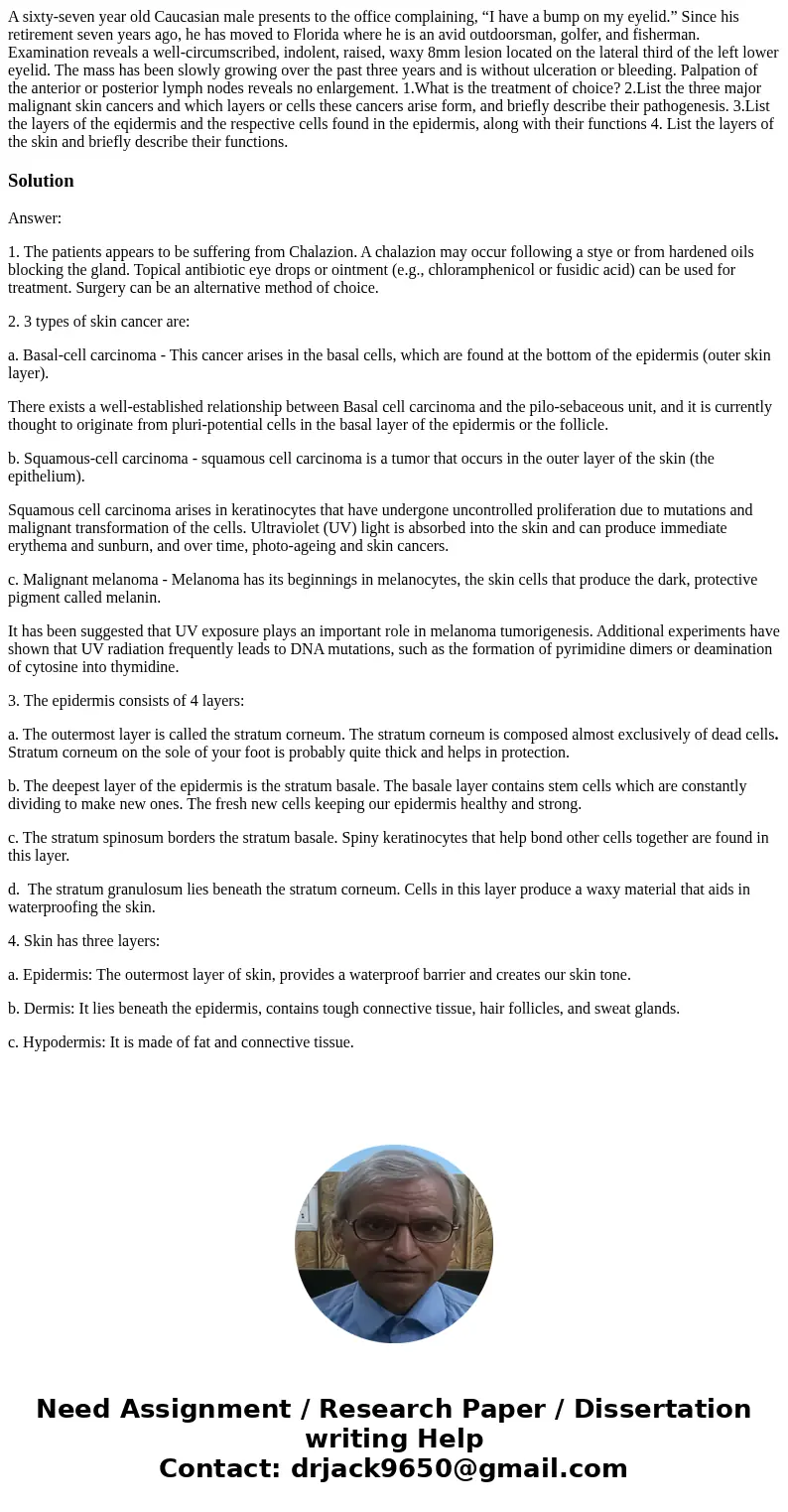A sixtyseven year old Caucasian male presents to the office
Solution
Answer:
1. The patients appears to be suffering from Chalazion. A chalazion may occur following a stye or from hardened oils blocking the gland. Topical antibiotic eye drops or ointment (e.g., chloramphenicol or fusidic acid) can be used for treatment. Surgery can be an alternative method of choice.
2. 3 types of skin cancer are:
a. Basal-cell carcinoma - This cancer arises in the basal cells, which are found at the bottom of the epidermis (outer skin layer).
There exists a well-established relationship between Basal cell carcinoma and the pilo-sebaceous unit, and it is currently thought to originate from pluri-potential cells in the basal layer of the epidermis or the follicle.
b. Squamous-cell carcinoma - squamous cell carcinoma is a tumor that occurs in the outer layer of the skin (the epithelium).
Squamous cell carcinoma arises in keratinocytes that have undergone uncontrolled proliferation due to mutations and malignant transformation of the cells. Ultraviolet (UV) light is absorbed into the skin and can produce immediate erythema and sunburn, and over time, photo-ageing and skin cancers.
c. Malignant melanoma - Melanoma has its beginnings in melanocytes, the skin cells that produce the dark, protective pigment called melanin.
It has been suggested that UV exposure plays an important role in melanoma tumorigenesis. Additional experiments have shown that UV radiation frequently leads to DNA mutations, such as the formation of pyrimidine dimers or deamination of cytosine into thymidine.
3. The epidermis consists of 4 layers:
a. The outermost layer is called the stratum corneum. The stratum corneum is composed almost exclusively of dead cells. Stratum corneum on the sole of your foot is probably quite thick and helps in protection.
b. The deepest layer of the epidermis is the stratum basale. The basale layer contains stem cells which are constantly dividing to make new ones. The fresh new cells keeping our epidermis healthy and strong.
c. The stratum spinosum borders the stratum basale. Spiny keratinocytes that help bond other cells together are found in this layer.
d. The stratum granulosum lies beneath the stratum corneum. Cells in this layer produce a waxy material that aids in waterproofing the skin.
4. Skin has three layers:
a. Epidermis: The outermost layer of skin, provides a waterproof barrier and creates our skin tone.
b. Dermis: It lies beneath the epidermis, contains tough connective tissue, hair follicles, and sweat glands.
c. Hypodermis: It is made of fat and connective tissue.

 Homework Sourse
Homework Sourse